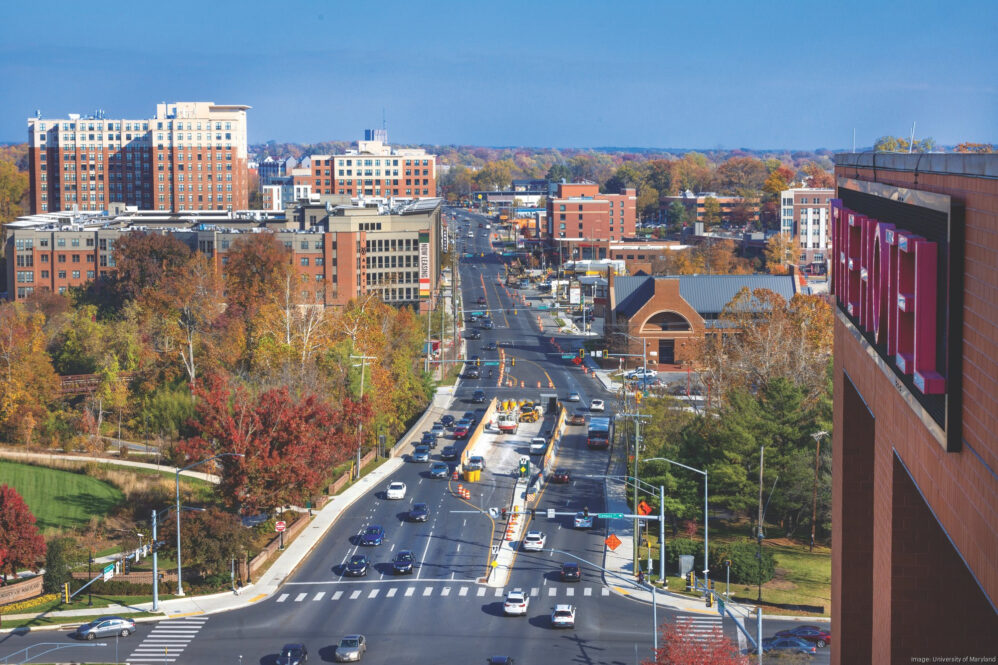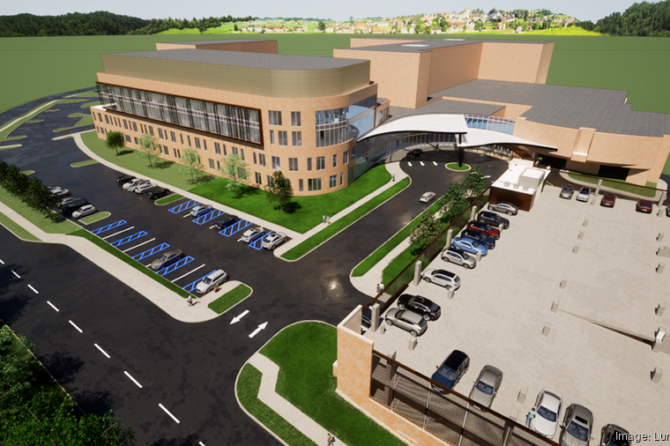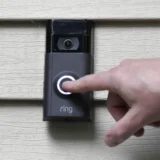WASHINGTON BUSINESS JOURNAL: One official says the area could well become “the most important economic force in all of Prince George’s County.”
There is so much more to College Park than the University of Maryland.
Of course, the two are inexorably intertwined, but the city of College Park has evolved from simply a home to the state’s leading public institution of higher learning into a center of high-tech industry, a collection of distinct neighborhoods, and a diversity of business interests. According to Placer.ai. there are roughly 6,700 workers any given workday in the university’s Discovery District alone.
On Nov. 2, the Washington Business Journal gathered business, political and university leaders at The Hotel at The University of Maryland for our final On the Road event of 2023, during which we tackled many of the hot button issues facing College Park, from the town-gown relationship to the Discovery District and the ongoing saga of the now-$9.4 billion Purple Line. The event, held in the hotel’s Top of 7’s penthouse space with views for miles, kicked off with a fireside chat between Washington Business Journal Publisher Alex Orfinger and University of Maryland President Darryll Pines, which led into a panel discussion.
What follows are excerpts from that panel discussion, edited for space and clarity. The panel was moderated by Managing Editor Michael Neibauer.
THE PANELISTS
David Iannucci, president and CEO, Prince George’s Economic Development Corp.
Susan Whitney, College Park City Council, District 2
Ken Ulman, president & chief strategy officer for economic development, Terrapin Development Co.
Kenneth Young, city manager, City of College Park
On the Purple Line saga
David Iannucci: I actually went to the groundbreaking for the Purple Line in 2017, just a few miles down here on Veterans Road, and remember being told it was going to open in the spring of 2023. And obviously there have been some serious delays. It has negatively impacted many of our communities, particularly if you go to the west part of Prince George’s County, Langley Park, Riverdale, are those communities with a heavy Hispanic population, a lot of retail establishments with their parking lots gone for three or four years and construction, it has been very, very difficult. So I’m not going to sugarcoat the fact that the delay has not been good for anyone. But I will take the long-term view that the connection of this east-west transportation corridor between New Carrollton through the University of Maryland, through Silver Spring and to Bethesda is a critical transportation infrastructure.
Ken Ulman: It’s been tough, but now there’s a light at the end of the tunnel. There are five stops on the Purple Line that are on our campus or adjacent. And we negotiated with the state a fare-free zone for anyone with a university ID within those five stops. So imagine you’re a student getting to your internship in D.C. You need to get to the Metro. You’re a faculty member getting to your lab back and forth. So when it’s built, it will really help transform this campus deeper into our surrounding community.
Susan Whitney: I don’t know that anyone is confident at this point because of the number of delays, but I think everybody knows it’s coming, that it will happen and believes that it will happen. I think mostly what I hear about when I hear complaints is just disruptions due to construction on Campus Drive. It’s very nice to come to this space and to see the progress from up here, because when you’re on campus, yeah, you don’t really see the path as much. You’re just kind of seeing the construction. So it’s nice to actually visualize it and see it happening.
Kenneth Young: I think a lot of what we’re involved in is managing those expectations that our residents have and our businesses have in terms of when the Purple Line would be finally done. And I think we try and focus on future development that could occur along the Purple Line, bringing in more density along the Purple Line. There’s areas that aren’t currently within the city limits, but we could look at expanding some of our limits to incorporate them within the city, and that provides a lot of opportunities for us.
On new development impacting on existing businesses, specifically the recent announcement that the College Park Shoppes would be demolished and redeveloped with apartments
Kenneth Young: A lot of what the city’s involvement is really being a fair mediator to both sides, both to the property owner as well as to the existing businesses. Those are private transactions. What we do try and do is make sure that can everybody can move forward, and be productive in terms of being able to move a project online, making sure that everybody is treated fairly and that they have what they need for their next phase.
Susan Whitney: The city, I believe, is doing as much as we can in our capacity. Council has put aside funds for business attraction and retention. When we put aside those funds during the budget session in March of this year, we were not anticipating losing 17 small businesses at once. But we are looking at perhaps increasing those funds.
On UMd’s Discovery District and the construction of developments nearby to bring amenities walkable from the office park
David Iannucci: We all share the vision of a quantum computing ecosystem, and the Discovery District will be the logical location for that. The office projects that COPT has there, that Brandywine has there, on paper are two of the largest office development projects in the county for years to come. Now we have some realities of teleworking and what that means for the office market. We’re all kind of scratching our heads and trying to figure that out. But this area could well become, if it’s not already, the most important economic force in all of Prince George’s County.
It also includes bringing the type of amenities that are necessary to make it not just a sterile office park, but a real, walkable community. That’s why we are so excited to work with the Terrapin Development Corporation, University of Maryland, and Bozzuto on the project just down Route 1, the Aster, which has our first Trader Joe’s, walkable to Metro, by the way. So that is all part of our design to create this type of a community.
Ken Ulman: You’ve got to be able to walk to something. You’ve got to be able to walk to a restaurant. You’ve got to be able to have an option to walk to Metro. And what we’ve had here historically is a group of buildings that were near the university. You know, you’ve got NOAA, you’ve got to FDA, you go to USDA, great jobs, great. Now we’re working on the connective tissue.
On expanding College Park’s economy so it doesn’t revolve around the school year
Susan Whitney: Having more residents here year-round is what we need to support small businesses. That’s what we need to support big businesses. I would argue that’s why Target left, because we have an eight-month economy essentially. So having more residents here year-round will help us support the businesses that not only the students want but the long-term residents want.
On College Park as a city for all, not just students and educators
Susan Whitney: We have a new neighbor homeownership grant, which has tied to it a requirement to live in the home for five years. The College Park City-University Partnership has put together a community preservation trust, which is not only a neighborhood stabilization program, but also an affordable housing program that will help residents who perhaps could not afford to buy a home in College Park to do so. So those are things I would like to see. Again, the goal is having people here long term, patronizing businesses, raising families here. But as far as the character of the neighborhood, that’s why I moved here. I was very pleased when I came to College Park and found all of this charming housing stock that I could actually afford. And I would like others who are just starting out to be able to do that as well.
Ken Ulman: That’s why Trader Joe’s came. They know students are good shoppers, but they needed to be confident that the residential population in the general area would support a Trader Joe’s.
Kenneth Young: We’re really also concentrating on making sure we get the market-rate developments that come into College Park, as well as concentrating on our neighborhoods within College Park, making them places that people want to be and where businesses want to go and have their employees live close by. So we’re really paying a lot of attention to that in partnership with the university.
On the FBI headquarters competition. On Nov. 8, six days after On the Road, the GSA announced it had chosen Greenbelt, roughly three miles from the center of College Park, for the FBI project.
David Iannucci: I have no doubt that we objectively have the two best sites and we’ve been raising particularly the equity argument, that when you look at the allocation of federal resources between Fairfax and Prince George’s County, between Virginia and Maryland, you can go back really to World War II, the decision by Roosevelt to put the Pentagon on the west side of the Potomac River changed this regional economy forever. That’s how important that the FBI can be to Prince George’s County. It will forever rebrand Prince George’s County. It’ll change our people, change the reality of our county.
Kenneth Young: I think for the City of College Park, we favor the Greenbelt location. Obviously on the north side coming off of there, you either enter into Greenbelt where if you come on the other side, you empty into College Park, into the Hollywood neighborhood. So obviously we have a lot of stake in the game.
Ken Ulman: The University of Maryland does have the No. 1 criminal justice program in the nation. We’re very, very proud. Also, the FBI hires more University of Maryland grads than any university in the country. And we pledged that we would launch the Maryland Institute of National Security in partnership with the FBI, both for our undergraduate students who would, for example, their junior year get cleared and work at FBI and then roll right into a job.
On the Terrapin Development Co.
Ken Ulman: The Terrapin Development Company is a real estate development company like any other. However, we are co-owned by the University of Maryland College Park and the University of Maryland College Park Foundation, essentially created to fill in some of the gaps that the private sector was not addressing in order to support the vision. so a great hotel conference center. we were able to partner with the municipality that is the City of College Park and the University of Maryland to build a new city hall, redevelop that entire block. We were able to acquire [Route 1 Liquors] then get Vigilante Coffee from Hyattsville to open their second store. And so, you know, great college towns have great coffee shops. And so we sort of fit into things that we think are really missing.
On the challenges and strengths of the town-gown relationship
Susan Whitney: I’ll start with the challenges because everyone knows what they are. Parties and parking, I guess, would be a good way to summarize it. But due to our excellent partnership with the university, we’ve gotten a lot of support. Students can actually face disciplinary measures on campus for activities that happens off campus. So that is an excellent motivator for students not to have crazy out of control parties that disrupt neighbors and neighborhoods. I would like to see a little more messaging from campus about the fact that, you know, you don’t really need to bring a car here if you live off campus.
David Iannucci: I’ll take the long view. I actually graduated from here many years ago, and I remember when the relationship was one of hostility between the two. I’ve had the chance to work with Ken and the University on the City-University partnership. It’s my personal view that the relationship has never been stronger. Literally over 50 or 60 years, I don’t think it’s ever been stronger.










